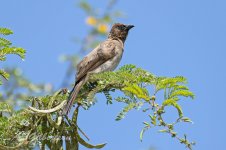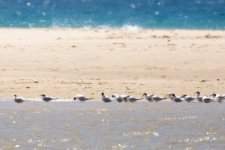A short distance NW of the town, on the main N340 road opposite the Los Lances beach hide that Jon mentions is a petrol station. A little further on a road runs from the N340 through two while pillars - it's about a mile from the Tarifa turn-off. A signpost inticates that Santuario de Nostra Señora de la Luz is 4 km away. A few hundred yards along that road is a collection of rubbish bins on the right. Taking the track past the bins the fields on either side are good for larks, tawny pipits, migrating black-eared wheatears, little owl, kestrels (common & lesser) hunting Montagu's harriers & short toed eagles. The slopes often hold hundreds of black kites biding their time until the wind drops enough for them to attempt a crossing. As an alternative to getting there along the busy main road, another track runs from near the Tarifa town turn-off, sub-parallel to the road, about a field to the north, intersecting the Santuario Road next to a square copse of trees between the N340 and the rubbish bins. This track can also be productive.
On the east side of the old town, from a point on the shore east of the port another track runs along the coast, leading initially, after a 1km walk to the newly built bird observatory at Punta Comorro. The track then continues on right along the Strait, via another observatory at Guadalmesi, about 8km from Tarifa town walls.







